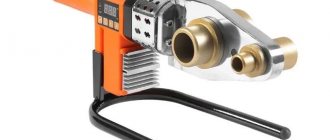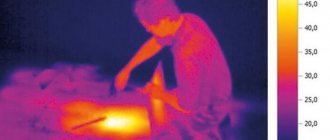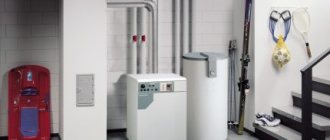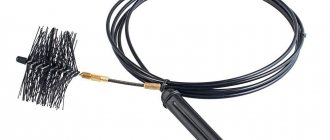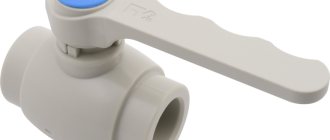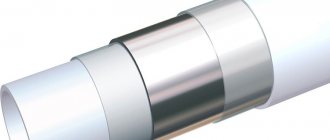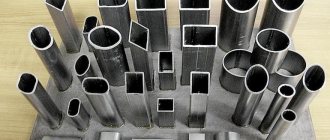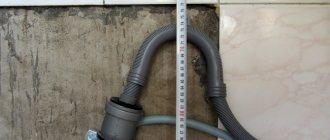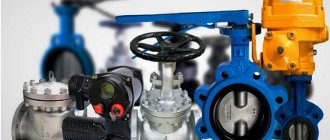What is it and what is it for?
Damper (from the German Schieber - damper) is a device for completely or partially blocking the movement of gases in the chimney. It has been used since the appearance of the first Russian stoves. Made from cast iron or steel. In modern engineering it has found application both in smoke exhaust structures and in ventilation systems.
How the gate works
Structurally, the gate is a locking device with an adjustable valve. It is thanks to the displacement of the valve that the movement of gases in the chimney is regulated. Can be installed in chimneys of round, square and rectangular cross-section. It is a metal plate that moves inside the smoke channel in a certain way.
Gate valves can be of two types:
- Retractable. Moves in one plane back and forth.
- Rotary. Regulates air access by rotating around its axis.
In addition, valves can be manual or equipped with an electric drive. The cost of the latter is an order of magnitude higher and they are not used in chimneys.
Specifications
General technical specifications for gate valves used in main oil pipelines are given in GOST R 55020-2012. Some provisions of this document:
- Nominal diameters (DN). The indicator (sometimes designated as DN) is equal to the cross-section of the internal passage channel, the main standard sizes are: 100 - 150 - 200 - 250 - 300 - 350 - 400 - 500 - 600 - 700 - 800 - 1000 - 1050 - 1200 mm.
- Nominal pressure (PN). Indicates the pressure characteristics of the transported medium at operating temperature parameters, typical range: 16 – 25 – 40 – 63 – 80 – 100 – 125 bar.
- Maximum pressure drops when the damper is opened: 16 – 25 – 30 – 40 – 50 – 63 – 70 – 80 – 100 bar.
- Temperature of the transported medium: - 15 to + 80 °C.
- Tightness: class A without visible leaks.
- Drive: manual with steering wheel, gear, electric.
Rice. 7 Drive types
- Climatic modification: U1 (ambient temperature up to - 40 °C) and HL1 (up to - 60 °C).
- Installation options: underground and above ground.
- Direction of movement of the working fluid: two-way.
- Percentage of suspended matter in the supplied medium: no more than 20%.
- Type of connection to pipes: welded (with welded nozzles or with welded coils), flanged, with mating welded flanges, combined (one nozzle with a flange, the other for welding).
- Body design: cast, cast-welded, cast-stamp-welded, stamp-welded.
- Flange designs: cast, butt welded and flat welded.
- Service life: at least 50 years.
- Designated service life: from 30 years.
Rice. 8 Design and manufacturing materials of a gate valve using the example of Omal brand products of the Pal series (Italy)
- Full and assigned life: 3000 and 1500 cycles, respectively.
- Service life and resource of replacement parts: 15 years and 750 cycles, respectively.
Since gate valves are used not only in pipelines with petroleum products, the above provisions of GOST R 55020-2012 are not mandatory for their manufacturers.
Many companies produce products in a wider range of nominal diameters from 50 to 2000 and even up to 3000 mm.
Also, in comparison with GOST R 55020-2012, the pressure characteristics of manufactured products may differ - for example, any indicator in the range from 1 to 10, 25 or 40 bar, as well as their temperature parameters, drive types (hydraulic and pneumatic drive). Many manufacturers supply products with a wider range of climate options.
Rice. 9 Dimensional and physical parameters of gate valves using the example of products of the PA 570 series
Types and designs
The chimney damper is available in several versions.
Retractable
It is a round or rectangular frame with a plate. The plate extends and retracts, thereby adjusting the cross-section of the chimney.
This option is most often used with brick and ceramic channels. To ensure incomplete sealing and avoid carbon monoxide poisoning, a small hole is made in the plate. The main advantage of this option is ease of installation.
Rotary throttle
A rotary or throttle valve (also known as a hog valve) is a plate made of steel or cast iron that rotates around an axis. The axis is a metal rod welded inside the chimney. Used in steel chimneys.
It is less reliable - over time, the welding fastening of the plate and axle weakens. You should avoid installing a rotary damper in the bathhouse - even when closed, this type of damper partially allows steam to pass through.
In addition, gate valves differ in material (the most common are stainless steel and cast iron) and the method of adjustment.
Differences between retractable and rotary gates
The retractable damper allows you to adjust the working cross-section of the chimney, while the rotary damper only allows you to open or close the pipe. Of course, some tricks are possible - such as securing the hog in an intermediate position in different ways, but the factory equipment does not provide for this. In addition, the rotary gate complicates mechanical cleaning of the pipe.
The hog is often installed in metal chimneys, and the retractable one is installed in brick chimneys.
Which material is stronger
In addition to structural differences, types of gate valves may differ in the material of manufacture. The only possible option is metal, since it is the only one that does not burn or deform at high temperatures, and over time, even in an aggressive environment, does not change its characteristics.
For production, either cast iron or stainless steel is used. It is not possible to build a damper from cast iron yourself, since this requires, at a minimum, a forge. However, you can find both nondescript and beautifully designed cast iron dampers on sale.
Cast iron rotary gate with a comfortable handle. This design is suitable for a brick chimney with a rectangular cross-section, capable of supporting the fairly heavy weight of the device
Steel products look simpler, but their characteristics are similar to their cast iron counterparts. The advantage of steel fixtures is their light weight. If a cast iron damper for a stove chimney is installed only on a durable, permanent structure, then a steel damper is suitable for any smoke exhaust ducts - brick and steel, rectangular and round, solid and light.
Samples of a galvanized steel damper, chimney cross-sectional diameter – 150 mm. Galvanization, unlike ordinary steel, does not react to moisture (condensation) and does not corrode
When choosing a material, you need to focus on the characteristics of the chimney and the features of the interior. For a country stove, a modest steel valve is sufficient, while for upgrading a Russian stove in a cottage, a custom-made cast iron valve is better suited.
Make it yourself or order it
The choice between a homemade or a ready-made damper should be based on the type of chimney and the degree of its readiness. So, you can install a self-made retractable structure into a ceramic or brick channel.
If we are talking about a stainless chimney that is in the process of assembly, in this case it is better to choose a finished product. The damper is usually included in the chimney system and is mounted using pipe-to-pipe technology, which I will talk about later.
In addition, it is not always possible in the store to select a product specifically for your chimney shape.
Main functions of gate valve
Being the main draft regulator inside the chimney, the damper regulates the combustion of fuel. To reduce the draft and reduce the intensity of the flame in the firebox, it is enough to close the slide valve. To increase traction, on the contrary, it is necessary to open it.
In fact, a gate is an ordinary metal plate that allows you to regulate traction.
It can be installed both in single-wall and double-wall boiler systems.
If the fireplace and stove are not in use, then during this period the gate valve must be in the closed position.
As a rule, the valve is installed at the initial section of the chimney (on the first meter), since this particular section remains uninsulated.
But on the contrary, it is not recommended to install a valve on a section of a well-insulated chimney pipe. Especially when it comes to double-circuit pipes. When the metal of the inner and outer pipe expands, the gate valve may jam.
So, the main tasks of a gate valve are:
- Function of the draft regulator in the chimney.
- Partial blocking of the chimney channel section.
- Regulator of flame burning intensity in the firebox.
Making and installing a gate valve with your own hands
Required materials and tools
To independently manufacture and install any type of stainless steel gate, we will need the following tools:
- Bulgarian;
- Abrasive wheels - cutting and grinding;
- Drill;
- Tap and thread lubricant;
- Hammer;
- Pliers;
- Vise;
- Welding and electrodes;
- Kern;
- Roulette;
- Compass;
- Marker.
- Stainless steel sheet (preferably domestic brand 12×18n10t, or imported AISI304, they are more expensive, but last an order of magnitude longer).
Sheet thickness 1.5-2.5mm;
- Stainless steel tube 6mm;
- Bolts 8mm -2 pcs;
- Metal rod for the frame.
Drawing and diagrams
Before manufacturing, it is necessary to draw a drawing or diagram of the future valve.
I will give some example diagrams below:
Size calculation
You need to take measurements very carefully; a gap of even a few millimeters can cause the chimney to malfunction.
- Using a tape measure, measure the dimensions of the internal section of the channel;
- Add 20-30 mm to the obtained result - you get the outer size of the frame;
- Do not forget to make an opening in the finished valve to release gas;
- The position of the welding holes should be accurately marked.
We summarize the dimensions for the rotary gate in the table:
Standard sizes
| vendor code | DN, mm | Flange drilling, PN | Working pressure, PN | Test pressure, PN | Actuator type AUMA/Flange size | H, mm | L, mm | M, mm | S, mm | G ± 1 mm, mm | K, mm | D, mm | Weight, kg |
| 702-050-7013 | 50 | 10/16 | 10 | 15 | SA 07.1/F-10 | 568 | — | 394 | 452 | 43 | 100 | 125 | 22 |
| 702-065-7013 | 65 | 10/16 | 10 | 15 | SA 07.1/F-10 | 594 | — | 420 | 452 | 46 | 120 | 145 | 23 |
| 702-080-7013 | 80 | 10/16 | 10 | 15 | SA 07.1/F-10 | 620 | — | 450 | 452 | 46 | 135 | 160 | 26 |
| 702-100-7013 | 100 | 10/16 | 10 | 15 | SA 07.1/F-10 | 657 | — | 487 | 452 | 52 | 158 | 180 | 28 |
| 702-125-7013 | 125 | 10/16 | 10 | 15 | SA 07.1/F-10 | 697 | — | 527 | 452 | 56 | 188 | 210 | 30 |
| 702-150-7013 | 150 | 10/16 | 10 | 15 | SA 07.5/F-10 | 775 | — | 605 | 452 | 56 | 212 | 240 | 45 |
| 702-200-7003 | 200 | 10 | 8 | 12 | SA 07.5/F-10 | 877 | — | 707 | 452 | 60 | 268 | 295 | 55 |
| 702-200-7013 | 200 | 16 | 8 | 12 | SA 07.5/F-10 | 877 | — | 707 | 452 | 60 | 268 | 295 | 55 |
| 702-250-7003 | 250 | 10 | 7 | 10 | SA 10.1/F-10 | 990 | 198 | 820 | 475 | 68 | 320 | 350 | 85 |
| 702-250-7013 | 250 | 16 | 7 | 10 | SA 10.1/F-10 | 990 | 198 | 820 | 475 | 68 | 320 | 355 | 85 |
| 702-300-7003 | 300 | 10 | 6 | 9 | SA 10.1/F-10 | 1111 | 255 | 941 | 475 | 78 | 370 | 400 | 97 |
| 702-300-7013 | 300 | 16 | 6 | 9 | SA 10.1/F-10 | 1111 | 255 | 941 | 475 | 78 | 370 | 410 | 97 |
| 702-350-7013 | 350 | 10 | 6 | 9 | SA 10.1/F-10 | 1197 | 296 | 1027 | 475 | 78 | 430 | 460 | 211 |
| 702-350-7013 | 350 | 16 | 6 | 9 | SA 10.1/F-10 | 1197 | 296 | 1027 | 475 | 78 | 430 | 470 | 211 |
| 702-400-7013 | 400 | 10 | 5 | 7,5 | SA 10.1/F-10 | 1307 | 336 | 1137 | 475 | 90 | 482 | 515 | 230 |
| 702-400-7013 | 400 | 16 | 5 | 7,5 | SA 10.1/F-10 | 1307 | 336 | 1137 | 475 | 90 | 482 | 525 | 230 |
| 702-450-7013 | 450 | 10 | 5 | 7,5 | SA 14.1/F-14 | 1417 | 375 | 1237 | 615 | 90 | 535 | 565 | 271 |
| 702-450-7013 | 450 | 16 | 5 | 7,5 | SA 14.1/F-14 | 1417 | 375 | 1237 | 615 | 90 | 535 | 585 | 271 |
| 702-500-7013 | 500 | 10 | 4 | 6 | SA 14.1/F-14 | 1529 | 440 | 1349 | 615 | 95 | 590 | 620 | 290 |
| 702-500-7013 | 500 | 16 | 4 | 6 | SA 14.1/F-14 | 1529 | 440 | 1349 | 615 | 95 | 590 | 650 | 290 |
| 702-600-7013 | 600 | 10 | 4 | 6 | SA 14.1/F-14 | 1716 | 540 | 1536 | 615 | 105 | 685 | 725 | 365 |
| 702-600-7013 | 600 | 16 | 4 | 6 | SA 14.1/F-14 | 1716 | 540 | 1536 | 615 | 105 | 685 | 770 | 365 |
The rotation speed of the electric drive for DN 50-400 is 45 rpm, for DN 450-600 is 22 rpm.
See Also:
- Butterfly valve with electric drive AUMA
- AUMA Electric Actuated Ball Valves
- Electric gate valve AUMA
- AUMA electric actuators
Installation features
- When installing the gate at the stage of laying brickwork, the frame is placed at a height of 6-8 rows from the base of the pipe;
- The frame should stand straight, without blocking the outline of the chimney;
- In stainless steel chimneys, the valve is installed using the “pipe-to-pipe” technology. It is necessary to coordinate its dimensions with the diameter of the channel;
- An important nuance - the damper is installed on an uninsulated section of the chimney;
- The height from the firebox to the damper should not exceed 1 m (for metal channels);
- Pipe height from the floor to the valve - 1.8 - maximum 2 m (for brick);
- The damper in the grooves should move freely;
Drive types
Depending on the size and purpose of the pipeline on which the gate valve is installed, different forces are required to change the position of the control element - the greater the throughput of the pipes and the higher the density of the working medium, the more difficult it is to open and close the valve.
Therefore, various options for controlling the mechanism are used for adjustment:
- The valves with a small internal diameter, installed on pipelines transporting liquid and gaseous working media of low density without hard particles, are controlled manually - using a handle, screw or lever.
- The electric drive allows you to precisely regulate the throughput of the unit without the application of physical force. Electrically driven gate valves can be used on large pipelines and to regulate the flow of viscous and granular working media. The only drawback of such a mechanism is its energy dependence.
- The pneumatic actuator drives the rod and locking mechanism using a compressed gas turbine, the operation of which is similar to that of a conventional pump. The strength of pneumatic control is that the entire control mechanism from the rod to the pneumatic turbine is located outside the valve body and does not come into contact with the working environment, which increases the service life of the device.
Pneumatically driven valves are the most complex and expensive. It is installed on pipelines that require remote adjustment, but the design of the control mechanism is such that, if necessary, manual adjustment is possible, which, thanks to the pneumatic turbine, does not require much physical force.
Frequent errors and problems during installation
- Installation of a valve in an insulated area. Under the influence of thermal expansion, the damper may jam;
- Installation of a cast iron part in a metal chimney (cast iron weighs a lot);
- Using too thin steel or stainless steel with a low nickel content for the manufacture of valves. Such a product quickly deforms under the influence of hot gases and can burn out;
- Installation of a gate with a non-smooth surface;
- Installation of a valve without a hole for carbon monoxide release;
- Installation of handles that do not allow monitoring the position of the valve (applies to rotary elements).
Features of gate maintenance
The gate, made of stainless steel, is usually polished to perfect smoothness. Soot settles on it poorly, but still settles. Therefore, it must be cleaned periodically.
The horizontal valve can be cleaned simply by pulling it out to the maximum and applying a special solution. Rotary - cleaned through the chimney with a special plastic brush. You should also ensure that the damper moves freely along the guides. It is allowed to periodically lubricate them with an anti-corrosion compound.
Expert advice
Where to install the damper on the chimney
There are 3 options for placing the damper relative to the chimney:
- Placement in the firebox of a fireplace or stove;
- Fastening according to the “pipe to pipe” principle;
- Installation in a ventilation pipe.
Let's consider the first 2 options:
- By placing the valve in the furnace firebox or in the outlet pipe
In this case, the damper is located at a height of no more than 1 m from the firebox, on an uninsulated section of the pipe. This location is convenient for adjusting the damper.
Applicable for metal chimneys. This installation option does not require additional fasteners. When purchasing a ready-made system, you should install the valve strictly according to the manufacturer’s instructions.
How to adjust traction
Adjusting the draft using a slider is quite simple. By changing the position towards increasing the gap, we increase the flow of air to the fire and the flame flares up stronger. Reduce the gap - traction decreases. The valve is closed after the flame has completely died out - this way the oven cools down much faster.
The latest boiler models are made with built-in automatic baffles. All other heating units require the mandatory installation of a damper.
How to install?
How to properly install a valve on a stove and how to install a valve on a chimney? It's simple, let's consider 2 cases.
Installing the damper in the furnace
When installing the damper in the furnace, you need to take into account that this is done during brick laying. It is placed at the beginning of the pipe, about a meter from the surface of the furnace itself. The frame fits tightly into the chimney structure, and the damper is installed after.
Installing a valve in a furnace can be done in three steps:
- Reach the 6th row of brick laying.
- Apply the solution in the desired location and carefully install the frame there. Sometimes you need to cut grooves in the brick for convenience and easier retraction.
- Align the frame so that it lines up with the bricks. Then you can continue laying bricks.
All cracks that may form when installing the plug must be sealed with mortar. Otherwise, there will be loss of thrust and combustion.
Video instruction:
Pipe installation
The damper is also installed at a height of 1 meter from the firebox
It is important that this is the uninsulated part of the pipe. Then there will be no temperature difference when the valve operates
Installation on the pipe is also simple. First, the first part of the pipe is attached. The joints are lubricated with sealant (temperature-resistant). A gate is tightly placed on top of the structure (the first nozzle). The second part of the pipe is attached to the gate on top. This entire structure is connected to an insulated chimney.
Thus, there is no need to further secure the structure.
It is worth saying that homemade gates can be attached to the pipe a little differently. This already depends on the design. An example of installation of a homemade rotary gate, we reviewed the manufacturing instructions above:
- We make a mark on the chimney pipe.
- Let's try on our preparation.
- We insert the gate into the pipe and screw it into the structure with a thread.
About firewood
As mentioned above, the quality of the fuel is of great importance. Both for the efficiency of heating equipment and for increasing its service life. This is especially true for firewood - a very unstable type of fuel. The efficiency of the boiler depends on the uniform supply of fuel, which is equalized in its calorific value. This is most important for modern technological heating devices, burdened with automation.
Firewood differs in its technical qualities - humidity, specific heat of combustion. That is why manufacturers of boiler equipment insist on choosing high-quality fuel.
Pellets and fuel briquettes are more efficient fuel for a wood boiler
The simplest way to achieve this requirement is to choose artificial “logs” - pellets, fuel briquettes.
You can read in more detail about the differences between firewood and their varieties in the article Pros and cons of various types of solid fuel for boilers: wood and its derivatives.
The manufacturer's recommendations, as a rule, indicate what length of logs are suitable for a particular firebox model. There are boiler options that can accommodate meter-long logs in the combustion chamber.
Log log discord
- Birch firewood
Birch has dense wood, so it burns hot and produces a lot of heat - 3750 kcal, even if the wood is damp. It is highly flammable. But when such firewood burns, especially damp wood, tar is released - a substance useful in medicine, cosmetology or for protecting surfaces from rotting, but extremely harmful to the insides of the boiler.
Soot on the boiler heat exchanger
- Alder firewood
Burning alder wood produces virtually no soot. Moreover, burning alder wood helps clean the chimney. Alder is flammable, burns well and produces a sufficient amount of heat - 2100 kcal.
- Aspen firewood
Burning aspen, like alder, cleans the chimney. But such firewood itself produces a little heat when burning - up to 1650 kcal.
- Pine firewood
They burn well and quite hotly (3800 kcal), but pine wood is resinous and a lot of soot is formed during combustion.
Firewood in the storage meter
- Spruce firewood
Spruce firewood is comparable in quality to pine, but has a slightly higher specific heat of combustion - 3900 kcal, and is also less resinous.
- Poplar firewood
Poplar burns hot, but burns out quickly.
- Firewood from apple and pear trees
Firewood from fruit trees - apple or pear - has dense wood, which means it produces a lot of heat, burns and smolders for a long time. But these species are usually grown for their fruits, so such firewood is not common. Another feature: the trunks of pear and apple trees are clumsy, the logs are difficult to prick, and the logs are knotty and difficult to pack tightly in the firebox.
- Oak, beech, ash firewood
Oak, beech, and ash are dense wood; when these species burn, a lot of heat is released - up to 3600 kcal. The disadvantages of oak or beech firewood include their rarity on sale and the difficulty of splitting and heating a boiler with them.
Considering the described qualities of wood as fuel, a good owner stores different types of firewood: some so that it flares up easily, others so that it burns long and hot, and others so that it can periodically clean the chimney of soot.
Manufacturers
In addition to the products of the PromArm company discussed above, the following companies supply their products to the domestic market:
END Armaturen is a German manufacturer of high-quality gate valves made of steel and cast iron (GG-25) in closed housings, designed for pressures of 5, 6, 7, 8, 10 bar and working fluid temperatures up to 190 °C. The bidirectional products offered for sale with a U-shaped gate with diameters from 50 to 400 mm are produced with manual and lever control.
Zetkama, a well-known Polish manufacturer on the domestic market, supplies gate valves made of cast iron EN-GJL-250 with diameters from 50 to 1200 mm. The products are intended for use in pipelines transporting liquids with a 5% solids content, installations for supplying dry materials to the pulp and paper industry, and in sewerage systems with a 35% waste content. Gate valves are designed to operate at a working medium pressure of 2, 4, 7 and 10 bar and its temperature not exceeding 90 °C.
Rice. 15 Gate valve Zetkama
FAF Vana is a trademark of a Turkish manufacturer of a wide range of shut-off and control valves. FAF gate valves are produced in bodies made of ordinary or high-strength cast iron with diameters from 50 to 600 mm. All of them are designed for a working fluid pressure of 10, 16 bar and its temperature of no more than + 130 °C. Designed for use in environments containing clean and waste water, pulp, crystallized and powdery substances, and are used for transporting substances in the brewing and food industries.
CMO is a brand of a Spanish company with headquarters and production facilities in the city of Talos, founded in 1993.
The company supplies the domestic market with a very wide range of gate valves of various designs - more than 20 items with different letters. The fittings are produced from different materials with nominal diameters from 50 to 3000 mm with all types of drives. The pressure range of all products is from 0.5 to 100 bar, working media are gases, pure and with varying contents of suspended or solid liquid fractions.
Rice. 16 ABRA gate valve
ABRA is a trademark of a Chinese company, whose products are sold in Russia by Abradox. ABRA gate valves are produced with diameters from 50 to 600 mm for pressures of 4, 6, 10 and 16 bar. The product range includes several types of knife models of different sizes, the operating temperature of which depends on the type of seals used: for EPDM it ranges from - 10 to + 95 °C, for NBR this indicator is from - 10 to + 70 °C.
Tecofi is a trademark of a French company that produces the widest range of knife gate valves in the following series: standard VG, with a through knife (VGT), for dispensing hoppers (VGS), with a square knife (VGC), with a rectangular gate valve inclined at 30 degrees (VGA) ), airlock with a rectangular knife (VGM).
Tecofi gate valve body materials are regular and ductile iron, carbon steel, stainless steel, aluminum, polyvinyl chloride (PVC). Tecofi gate valves are produced with diameters from 50 to 1200 mm, their nominal pressures are 1, 2, 4, 7 and 10 bar; in special designs, the pressure characteristics can be 25 and 40 bar. The operating temperature for EPDM seals is 110 °C.
Rice. 17 Tecofi brand gate valve
Adjusting the temperature of a solid fuel boiler
The efficiency of a heating system depends on a uniform temperature supply. And if in gas and liquid fuel boilers this issue is resolved by continuous fuel supply, then in solid fuel boilers there is no such possibility. And the solid fuel itself, when burned, releases its temperature unevenly: at the beginning and end of combustion, the portions of firewood are smaller, in the middle of the process – more.
A system for regulating the intensity of fuel combustion, that is, the supply of air necessary for combustion, helps to partially solve this problem.
Thermostatic draft regulator
The boiler doors have seals, so air enters under the grates through the lower damper. The amount of opening of this blower flap is controlled by a thermostatic draft regulator .
Thermostatic draft regulator. Photo from cotlix.com
The required temperature is set on it, and the regulator itself is mechanically (by a chain) connected to the blower door. If the temperature is insufficient, the regulator slightly opens the blower door; if it is too high, it closes it.
You need to understand that a solid fuel boiler is a very inert device, and the draft regulator controls the combustion process with a large error. Therefore, the entire heating system must be designed taking this feature into account.
Fan and controller
A smoother adjustment of the combustion process is possible using a fan that pumps a specified amount of air into the firebox. The number of revolutions of the device blades is regulated by a controller that takes into account the readings of the temperature sensor and the value of the temperature set by the user.
Shiber
A damper is a damper on a chimney, otherwise called a throttle. The damper is installed after the boiler and blocks the chimney channel. Whether it needs to be installed or not depends on the equipment model. Some types of boilers are equipped with a damper as standard; in other cases, manufacturers may recommend installing an additional damper in the chimney.
The damper allows you to increase the efficiency of the heating device by partially blocking the chimney and reducing the rate of removal of heated combustion products. How much to open or close the damper can only be determined experimentally, because it depends on the outside air temperature, humidity, atmospheric pressure, wind direction and strength.
Properly selected heating equipment, and most importantly, its effective use, will bring warmth into the house, and the owners will only need to supplement it with home comfort.
>
Advantages of the device
The main advantages of using valves equipped with an electric drive include the possibility of remote control. Full automation of the entire work process is also possible, but only when using a complete set of equipment.
The cost of such equipment will be somewhat more expensive compared to devices that are equipped with mechanical drives, but subsequent operating costs will be fully recouped in the near future due to ease of maintenance and more accurate operation and adjustment of the device. With their help, it will become easier to respond to emergency situations, which helps prevent large losses.
Advantages:
- possibility of installation and subsequent operation in hard-to-reach conditions and places;
- comfortable maintenance and management;
- it will take very little time to close and open the damper;
- significant reduction in the coefficient of hydraulic losses.
